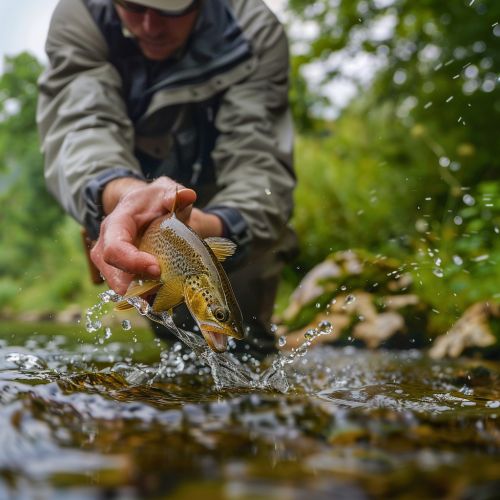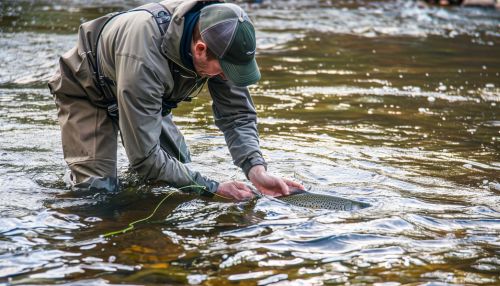Catch and Release
Catch and Release
Catch and release is a practice within recreational fishing intended to conserve fish populations by catching fish and then releasing them back into the water. This method has become increasingly popular among anglers who wish to enjoy the sport of fishing while minimizing their impact on fish stocks and ecosystems.


Historical Context
The concept of catch and release has its roots in the early 20th century, particularly within the United States and the United Kingdom. Initially, it was promoted by conservationists and sport fishing organizations as a means to ensure sustainable fishing practices. The practice gained momentum in the 1950s and 1960s, coinciding with the rise of environmental awareness and the establishment of various conservation laws.
Techniques and Equipment
Catch and release requires specific techniques and equipment to ensure the fish's survival after release. Key components include:
- **Barbless Hooks**: These hooks are designed to minimize injury to the fish. They are easier to remove and reduce handling time.
- **Landing Nets**: Using a rubberized or knotless landing net helps prevent damage to the fish's scales and slime coat.
- **Dehooking Tools**: Tools such as pliers or specialized dehookers allow anglers to remove hooks quickly and safely.
- **Proper Handling**: Minimizing air exposure and handling fish with wet hands or gloves reduces stress and injury.
Physiological Impact on Fish
Catch and release can cause physiological stress to fish, including exhaustion, injury, and changes in behavior. Studies have shown that factors such as water temperature, handling time, and hook location significantly influence post-release survival rates. For instance, fish caught in warmer water or those hooked deeply in the gills or stomach have lower survival rates.
Ethical Considerations
The ethics of catch and release are debated within the angling community. Proponents argue that it allows for the enjoyment of fishing while conserving fish populations. Critics, however, contend that it can cause unnecessary stress and suffering to fish. Ethical catch and release practices emphasize minimizing harm and ensuring the highest possible survival rates.
Conservation and Management
Catch and release is a critical component of modern fisheries management. It helps maintain fish populations, particularly in areas where overfishing is a concern. Many fisheries management agencies promote catch and release through regulations, educational programs, and research initiatives. These efforts aim to balance recreational fishing with the need to protect aquatic ecosystems.
Species-Specific Practices
Different fish species require tailored catch and release practices due to their unique physiological and behavioral characteristics. For example:
- **Trout**: Trout are particularly sensitive to handling and temperature changes. Using barbless hooks and minimizing air exposure are essential.
- **Bass**: Bass are more resilient but still require careful handling. Using a lip-grip tool can help reduce injury.
- **Sharks**: Releasing sharks involves specific techniques to avoid injury to both the angler and the fish. Dehooking devices and heavy-duty gloves are often used.
Legal Regulations
Many regions have implemented legal regulations to enforce catch and release practices. These regulations may include mandatory use of barbless hooks, seasonal restrictions, and size limits. Compliance with these laws is crucial for the success of conservation efforts.
Research and Innovations
Ongoing research in the field of catch and release focuses on improving techniques and understanding the long-term impacts on fish populations. Innovations such as biodegradable hooks and advanced dehooking tools are being developed to enhance the practice's effectiveness and sustainability.
